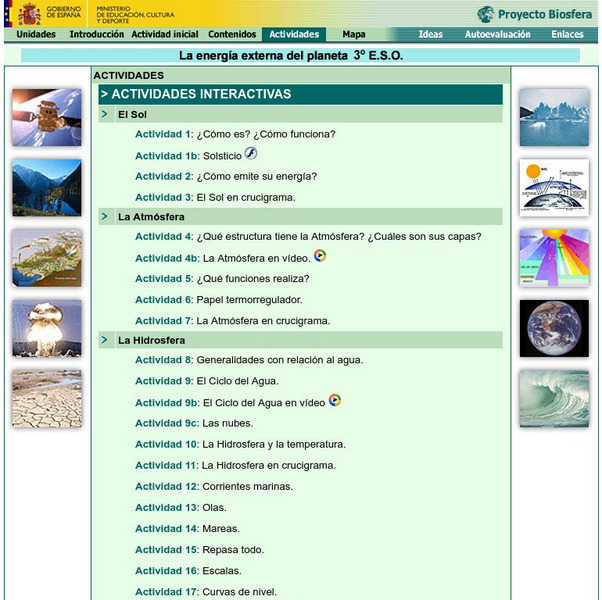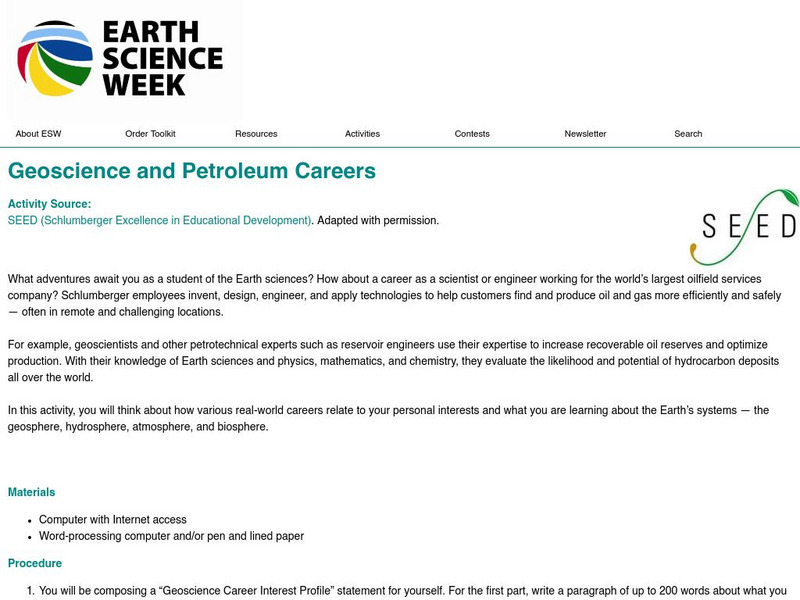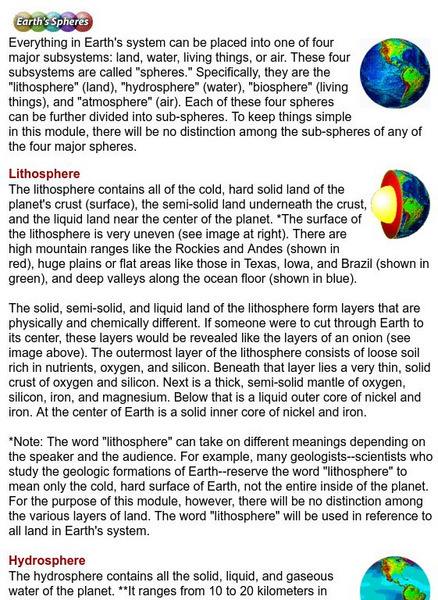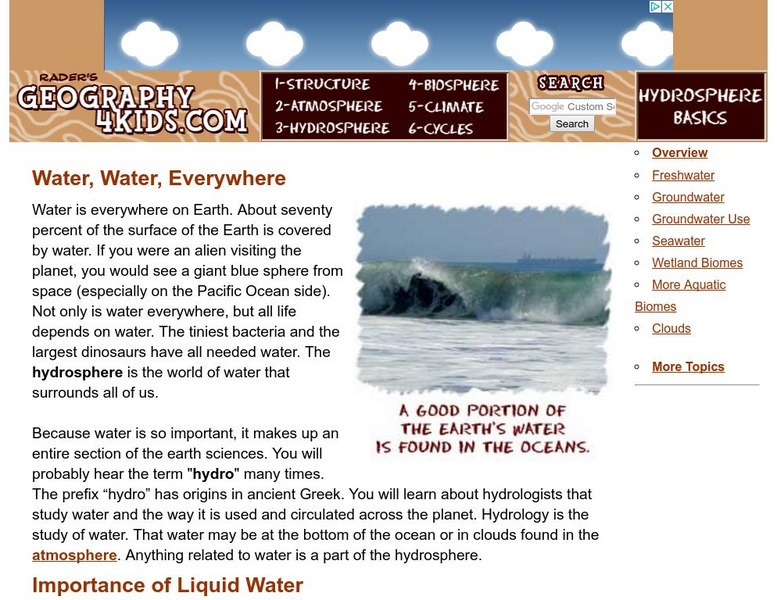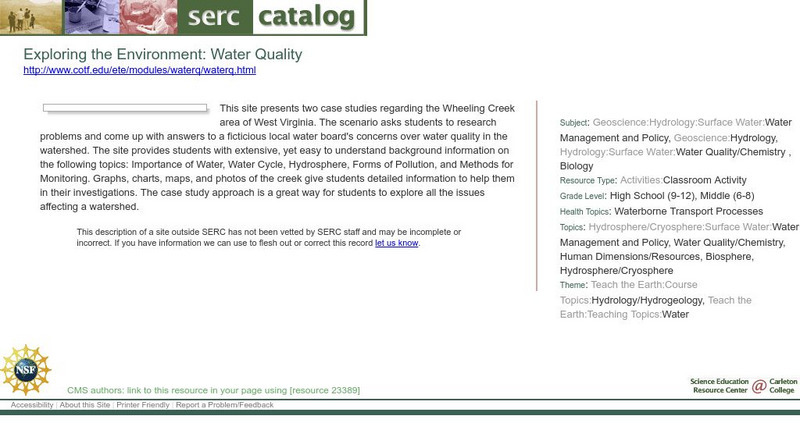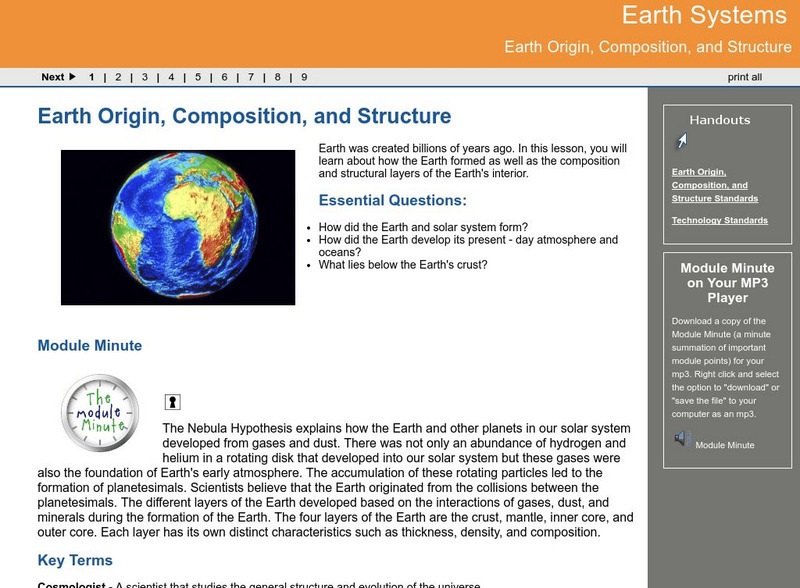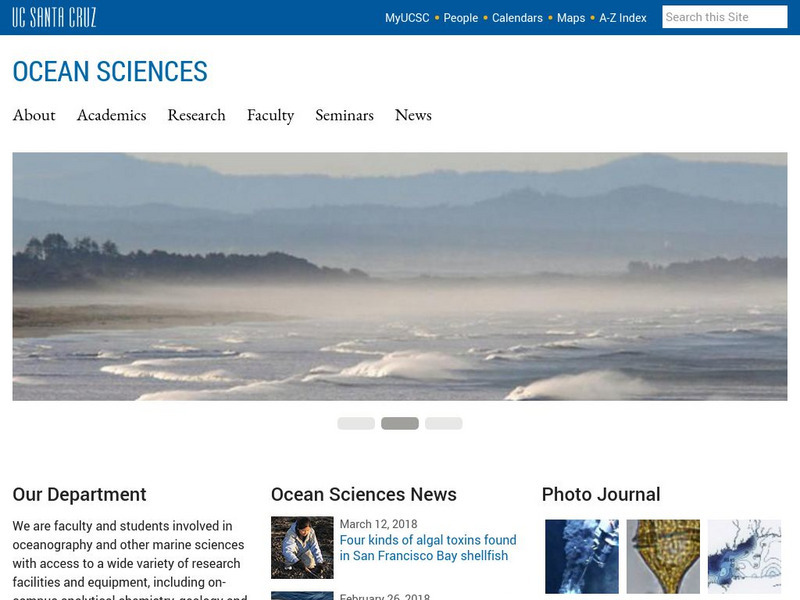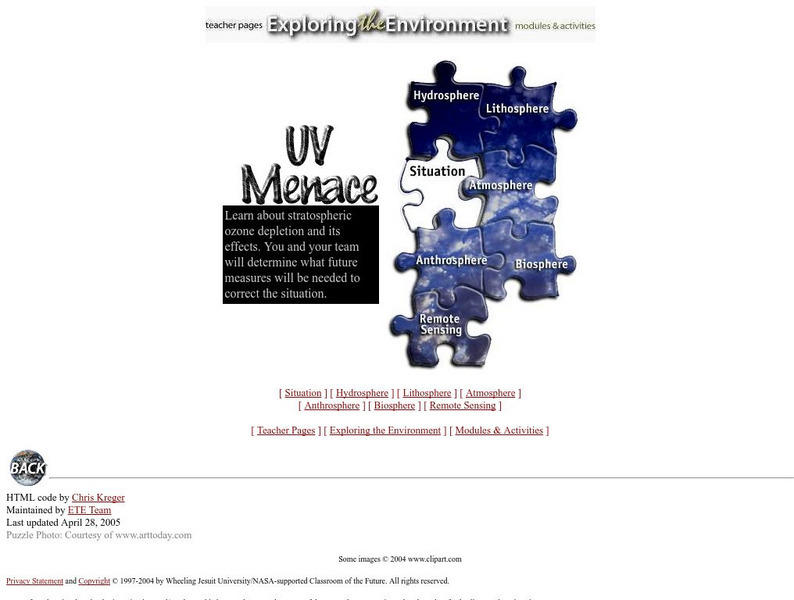American Geosciences Institute
American Geosciences Institute: Earth Science Week
This site includes learning resources and activities for Earth Science Week 2016. The goal of the week is to "engage young people and others in exploring geoheritage throughout the Earth systems, including the geosphere, hydrosphere,...
University Corporation for Atmospheric Research
Ucar: Elementary Globe: Earth System in a Bottle
If you have seeds at home, try this activity to help kids learn what a seed needs to grow. Students will create experimental conditions in terrariums to study what plants need to live. They will learn about the importance of the...
National Association of Geoscience Teachers
Nagt: Earth System Science Project
An Earth System Project shows the interaction between the Geosphere, Hydrosphere, Atmosphere, and Biosphere. This project provides a model of a pond ecosystem and can easily be woven into the hydrosphere unit.
National Institute of Educational Technologies and Teacher Training (Spain)
Ministerio De Educacion: La Energia Externa Del Planeta
What do you know about the energy that comes to our planet? It is the energy from the sun but how does it work? What interaction produces with the atmosphere and hydrosphere? What effects produce in the geosphere? It contains 17...
American Geosciences Institute
American Geosciences Institute: Earth Science Week: Geoscience and Petroleum Careers
In this activity, learners think about how various real-world careers relate to personal interests and Earth's systems- the geosphere, hydrosphere, atmosphere, and biosphere.
Mocomi & Anibrain Digital Technologies
Mocomi: Carbon Cycle
The carbon cycle is one of the most important cycles. It is the biogeochemical cycle by which carbon is exchanged among the biosphere, pedosphere, geosphere, hydrosphere, and atmosphere of the Earth. This cycle is important because it...
Center for Educational Technologies
Classroom of the Future: Earth Spheres
Everything in Earth's system can be placed into one of four major subsystems: land, water, living things, or air. These four subsystems are called "spheres." Specifically, they are the "lithosphere" (land), "hydrosphere" (water),...
CPALMS
Florida State University Cpalms: Florida Students: Earth's Spheres
Check out the tutorial which introduces the Earth's spheres. Viewers should be able to identify the Geosphere, Biosphere, Atmosphere, Hydrosphere and Cryosphere and know their differences and similarities.
CK-12 Foundation
Ck 12: Life Science: 12.15 Biosphere
Understand Earth's biosphere which contains the lithosphere, hydrosphere, and atmosphere.
The Wonder of Science
The Wonder of Science: 5 Ess2 1: Earth Sphere Interactions
Fifth graders develop a model using an example to describe ways the geosphere, biosphere, hydrosphere, and/or atmosphere interact.
Geography 4 kids
Geography4 kids.com: Flowing Water
Take a look at the earth's hydrosphere. From liquid to glacier, to vapor, to oceans and clouds this text offers an overview for young researchers.
Science Education Resource Center at Carleton College
Serc: Exploring the Environment: Water Quality
A project based scenario where students research problems and come up with answers to a local water board's concerns over water quality in the watershed. Background information is accessible for the following topics: importance of water,...
US Geological Survey
U.s. Geological Survey: Volcanoes
Six-part interdisciplinary teaching packet. Through the story of the 1980 eruption of Mount St. Helens, young scholars will answer fundamental questions about volcanoes. By learning about volcanoes, students will understand that the...
Massachusetts Institute of Technology
Mit: Open Course Ware: Courses: Civil Environmental: Ecology I: The Earth System
College-level online course highlighting the fundamentals of ecology. Course topics include coevolution of the biosphere, geosphere, atmosphere, and hydrosphere; photosynthesis and respiration; and the carbon, nitrogen, and water cycles....
Vision Learning
Visionlearning: Earth Science: The Carbon Cycle: What Goes Around Comes Around
Instructional module focusing on the carbon cycle. Discussion includes the biological and geological components of how carbon moves through the atmosphere, lithosphere, and hydrosphere. Site also includes an interactive practice quiz and...
Indiana University
Indiana Univ.: Global Energy Transfer, Atmosphere and Ocean Circulation, Climate
A course lecture on the external processes that shape the Earth, specifically the hydrologic system. This system is powered by the Sun's energy. The components of the Earth's energy budget are described, and how these drive the movement...
Georgia Department of Education
Ga Virtual Learning: Earth Origin, Composition, and Structure
In this lesson, you will learn about how the Earth formed as well as the composition and structural layers of the Earth's interior.
Other
Institute of Geophysics and Planetary Physics
Studies involving earth sciences, marine sciences and oceanography.
University Corporation for Atmospheric Research
Ucar: The Earth as a System
An overview of content about Earth and its atmosphere. The module was developed for middle school science teachers to provide background information for teaching the curriculum.
TED Talks
Ted: Ted Ed: A Guide to the Energy of the Earth
Energy is neither created nor destroyed - and yet the global demand for it continues to increase. But where does energy come from, and where does it go? This video examines the many ways in which energy cycles through our planet, from...
Center for Educational Technologies
Nasa Classroom of the Future: Environment Module: Uv Menace
This site provides information and activities for classes to learn more about ozone depletion and UV radiation.
PBS
Pbs Learning Media: Kids in Motion: Water Cycle Fitness Lesson Plan
For this lesson, young scholars unite science and physical activity to learn about the water cycle!
Other
Few: Human Impact on the Environment & Environmental Impact on Humans
Human beings have an enormous impact on the natural environment, and ultimately on each other. The way we chose to house, clothe, shelter, and meet the needs for vital resources such as food, energy, and water, not only affect the...
Smithsonian Institution
National Air and Space Museum: Exploring the Planets: Earth's Lithosphere
The plate tectonics and other features of the Earth's lithosphere are explained and illustrated. Has links to definitions of the magnetosphere, atmosphere, and hydrosphere.
Other popular searches
- Biosphere and Hydrosphere
- Hydrosphere and Lithosphere
- Lithosphere Hydrosphere
- Hydrosphere +"Atmosphere"
- Hydrosphere "Atmosphere
- Hydrosphere and Atmosphere
- Hydrosphere and Pollution
- Lithosphere, Hydrosphere
- Hydrosphere Atmosphere
- Hydrosphere "Atmosphere"
- Hydrosphere +Atmosphere
- Hydrosphere "Stmosphere





